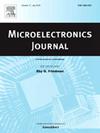Radiation effects modeling of InP-based HEMT based on neural networks
IF 1.9
3区 工程技术
Q3 ENGINEERING, ELECTRICAL & ELECTRONIC
引用次数: 0
Abstract
This paper has proposed a novel radiation effects modeling methodology based on neural networks for InP-based high-electron-mobility transistors (HEMTs). 2 MeV proton radiation has been performed with dose of 1 × 1012 H+/cm2, 5 × 1012 H+/cm2, 1 × 1013 H+/cm2, 5 × 1013 H+/cm2, 1 × 1014 H+/cm2. The radiation neural network models were comparatively constructed based on Feedforward Neural Network (FNN), Recurrent Neural Network (RNN), and Long Short-Term Memory (LSTM). Results indicate that the LSTM network outperforms the FNN and RNN networks in the modeling for both drain-source current (IDS) and S-parameters, which demonstrates superior prediction accuracy with smaller fitting error. The proposed modeling approach offers an accurate characterization for the radiation effects of InP-based HEMT devices, without the need to consider the complex degradation process associated with radiation, thus providing practical guidelines for the space applications of such devices.
基于神经网络的 InP 基 HEMT 辐射效应建模
本文针对基于 InP 的高电子迁移率晶体管 (HEMT) 提出了一种基于神经网络的新型辐射效应建模方法。2 MeV 质子辐射的剂量分别为 1 × 1012 H+/cm2、5 × 1012 H+/cm2、1 × 1013 H+/cm2、5 × 1013 H+/cm2、1 × 1014 H+/cm2。比较构建了基于前馈神经网络(FNN)、循环神经网络(RNN)和长短期记忆(LSTM)的辐射神经网络模型。结果表明,在漏极-源极电流 (IDS) 和 S 参数的建模中,LSTM 网络优于 FNN 和 RNN 网络,其预测精度更高,拟合误差更小。所提出的建模方法可准确描述基于 InP 的 HEMT 器件的辐射效应,而无需考虑与辐射相关的复杂降解过程,从而为此类器件的空间应用提供了实用指南。
本文章由计算机程序翻译,如有差异,请以英文原文为准。
求助全文
约1分钟内获得全文
求助全文
来源期刊

Microelectronics Journal
工程技术-工程:电子与电气
CiteScore
4.00
自引率
27.30%
发文量
222
审稿时长
43 days
期刊介绍:
Published since 1969, the Microelectronics Journal is an international forum for the dissemination of research and applications of microelectronic systems, circuits, and emerging technologies. Papers published in the Microelectronics Journal have undergone peer review to ensure originality, relevance, and timeliness. The journal thus provides a worldwide, regular, and comprehensive update on microelectronic circuits and systems.
The Microelectronics Journal invites papers describing significant research and applications in all of the areas listed below. Comprehensive review/survey papers covering recent developments will also be considered. The Microelectronics Journal covers circuits and systems. This topic includes but is not limited to: Analog, digital, mixed, and RF circuits and related design methodologies; Logic, architectural, and system level synthesis; Testing, design for testability, built-in self-test; Area, power, and thermal analysis and design; Mixed-domain simulation and design; Embedded systems; Non-von Neumann computing and related technologies and circuits; Design and test of high complexity systems integration; SoC, NoC, SIP, and NIP design and test; 3-D integration design and analysis; Emerging device technologies and circuits, such as FinFETs, SETs, spintronics, SFQ, MTJ, etc.
Application aspects such as signal and image processing including circuits for cryptography, sensors, and actuators including sensor networks, reliability and quality issues, and economic models are also welcome.
 求助内容:
求助内容: 应助结果提醒方式:
应助结果提醒方式:


